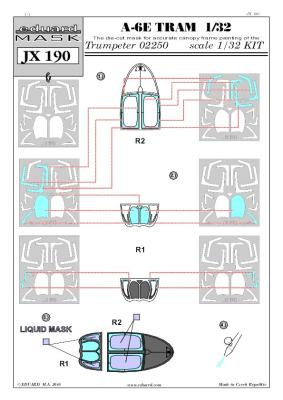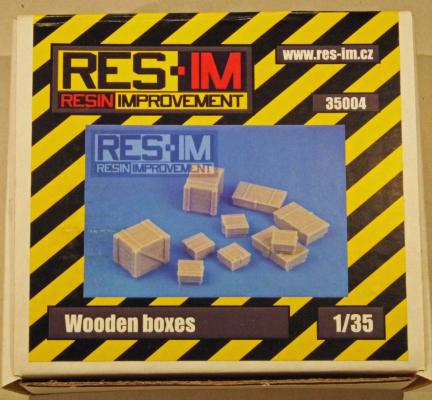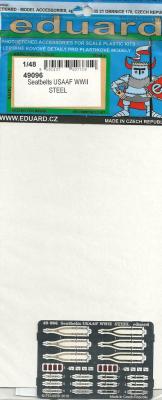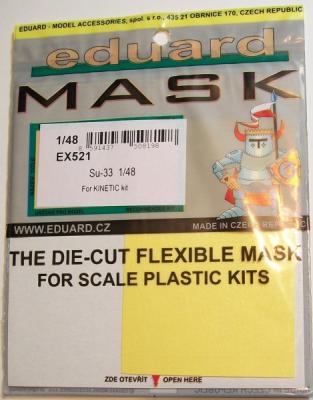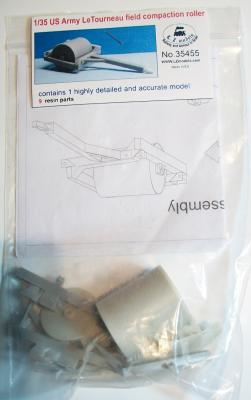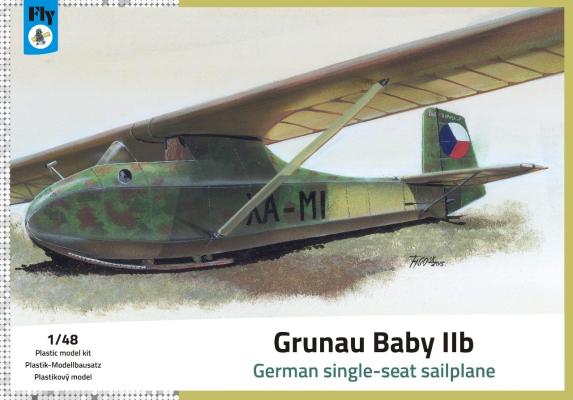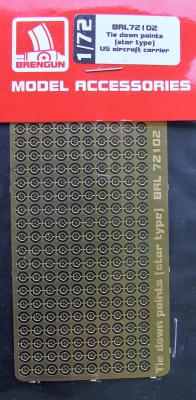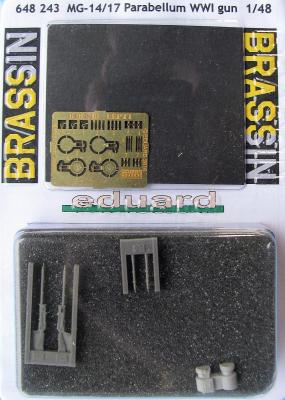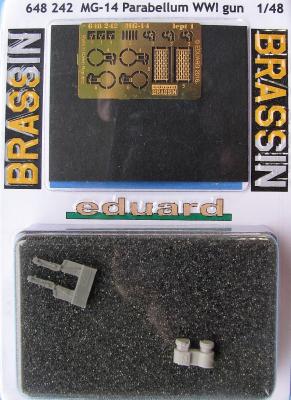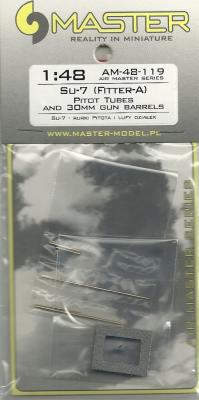Trumpeter has issued two versions of their 1/32 A-6 Intruder which was on many people's most-wanted list. While the kit is expensive, it is well done, well detailed and builds into a great replica. Of course that doesn’t mean there isn't some room for improvement. While the aftermarket has been slow coming, Eduard has issued sets for the A-6E TRAM version to spice up several areas of the kit as well as a canopy masking set.
What's New
RES_IM, a small company out of Czechoslovakia, continues to add to its list of quality aftermarket and modeling supply products, this time with a package of ten generic wooden boxes in 1/35th scale.
The small, sturdy box contains three separate baggies of resin parts mounted on casting blocks. Two large, square boxes, three medium-sized rectangular flat boxes and five smaller, square flat boxes. All boxes are solid resin and sealed. All contain excellent fine wood grain and cross members representing generic crates. No decals, markings or instructions are included – although I’m pretty sure instructions aren’t needed here!
The resin boxes must be separated their casting blocks of resin, and this is no simple task. The entire bottoms of the boxes are attached, so it takes a little time and patience to separate the boxes from their backing, and it generates a lot of resin dust.
Eduard has released a series of WWII-era seatbelts in the “steel” series. I think that Eduard Models calls this product line “Steelbelts”.
This is a mask set for the Kinetic Su-33 Kit. This set helps save time masking the canopy and wheels by providing all you need with pre-cut masks.
In the packet is:
- 1 precut masking sheet
- 1 instruction sheet
The masks are for the front windscreen, main canopy and the wheel hubs
Summary
This is very good and time saving when it comes to masking, which is perfect for this kit and really helps.
Thanks go to Eduard for providing this set to review and IPMS USA for allowing me to review it for them.
L.Z Models has provided another great accessory for any military tractor. These were used to flatten ground to allow the building of airfields and camps, etc.
The detail quality is great, with minimal flash or other imperfections. The parts, once removed from the mold base, are ready to assembly. The small parts are very delicate and you must take extreme care when removing them from the mold base.
The assembly is quick and easy. The final part is painted olive drab and looks great as an addition to any diorama.
Thanks go to L.Z Models for providing this kit to review and IPMS USA for allowing me to review it for them.
History
The Schneider Grunau Baby was a single-seat sailplane first built in Germany in 1931, with some 6,000 examples constructed in some 20 countries. It was relatively easy to build from plans, it flew well, and the aircraft was strong enough to handle mild aerobatics and the occasional hard landing. When the Baby first appeared, it was accepted wisdom that the pilot should feel as much unimpeded airflow as possible, to better sense rising and falling currents of air and temperature changes etc.
For those unfamiliar with carrier aviation, when an aircraft is not actively in use, it is secured to the deck using a come-along device between attachment points on the aircraft and tie downs on the deck. The tie downs are dished out areas on the deck (flight deck and hangar bay) with a welded on set of metal rods that form a star shape. I became most familiar with a flight deck tie down during my shellback initiation as I blew the water out of one of the tie downs as I awaited the next station. When the flight deck or hangar bay has a fresh coat of non-skid applied, the tie downs are masked off. Depending on the era of the carrier you are modeling, you will find tie downs painted either white or a dark gray (I prefer Model Master Engine Gray to represent this).
Developed in 1917 as a follow up to the MG-14, the MG-14/17 Parabellum was a machine gun used on WWI German aircraft that was capable of firing 700 rounds per minute of its deadly 7.92 mm ammunition. In addition to use on aircraft, my internet research also located photos of the guns used by the infantry. The offset 3-power scope shown in many of the photos is included with this Eduard release.
Developed as a replacement for the Maschinengewehr 08, the MG-14 Parabellum was a machine gun used on WWI German aircraft that was capable of firing 700 rounds per minute of its deadly 7.92 mm ammunition. Although Anthony Fokker used this model gun in the development of the synchronizing gear for his aircraft, the gun was typically used in the flexible mounts of reconnaissance aircraft, bombers, and Zeppelins. The lighter weight of the gun (as compared to the MG-08), high rate of fire, and reduction in the size of the ammunition belt, set the MG-14 apart as a weapon of choice.
The Su-7 - in 1/48 scale - has one kit in town: the late 80s kit from Kopro/OEZ recently re-boxed by Eduard. The model is somewhat limited in surface detail and different manufactures offer ways to enhance it. Among them is Master Model which offers a drop-in replacement for the guns and pitot tubes (nose and wing).
As you can see in the pictures, the guns are a vast improvement over the originals, which are basically a plastic rod. The metal replacement parts have nice hollow ends and have different lengths to properly reproduce the placement of the guns in the Su-7.
The wing’s pitot tube has a much fine shape than the plastic one. Please note that you will have to keep the base of the plastic pitot tube and modify it to receive the turned brass one. Very simple to do with a file and a drill bit.

